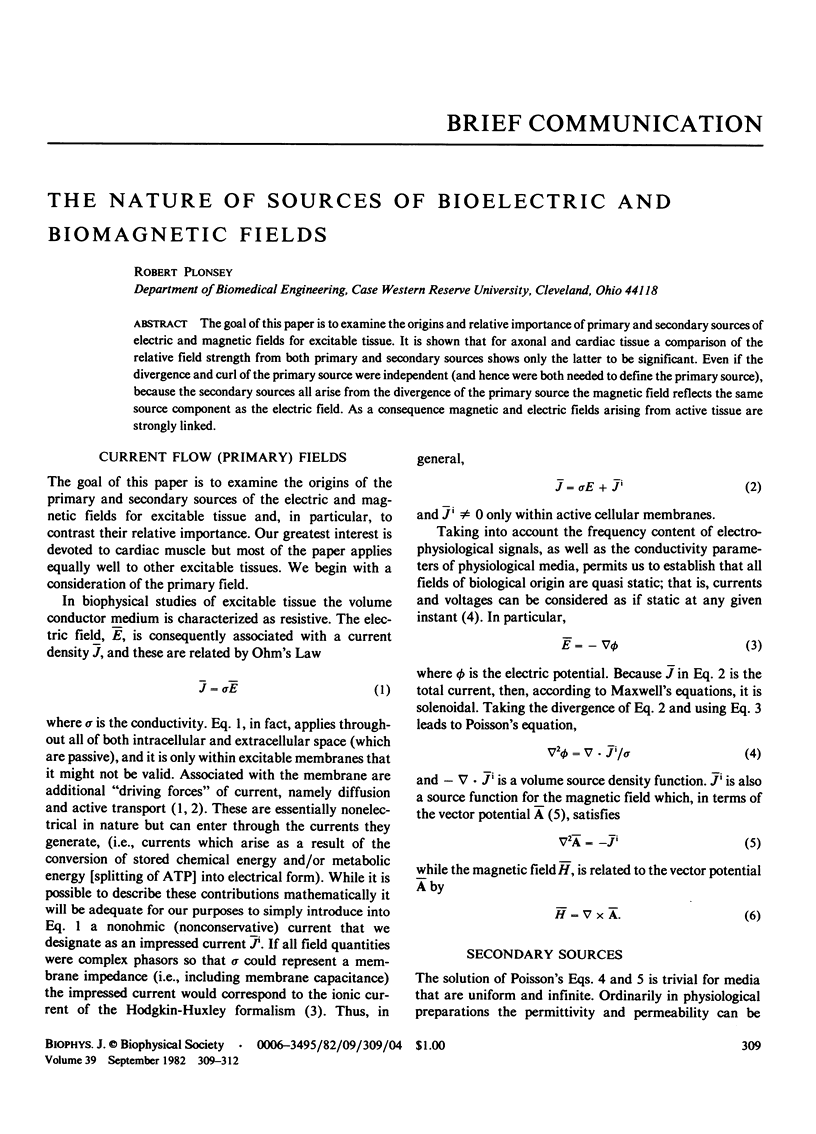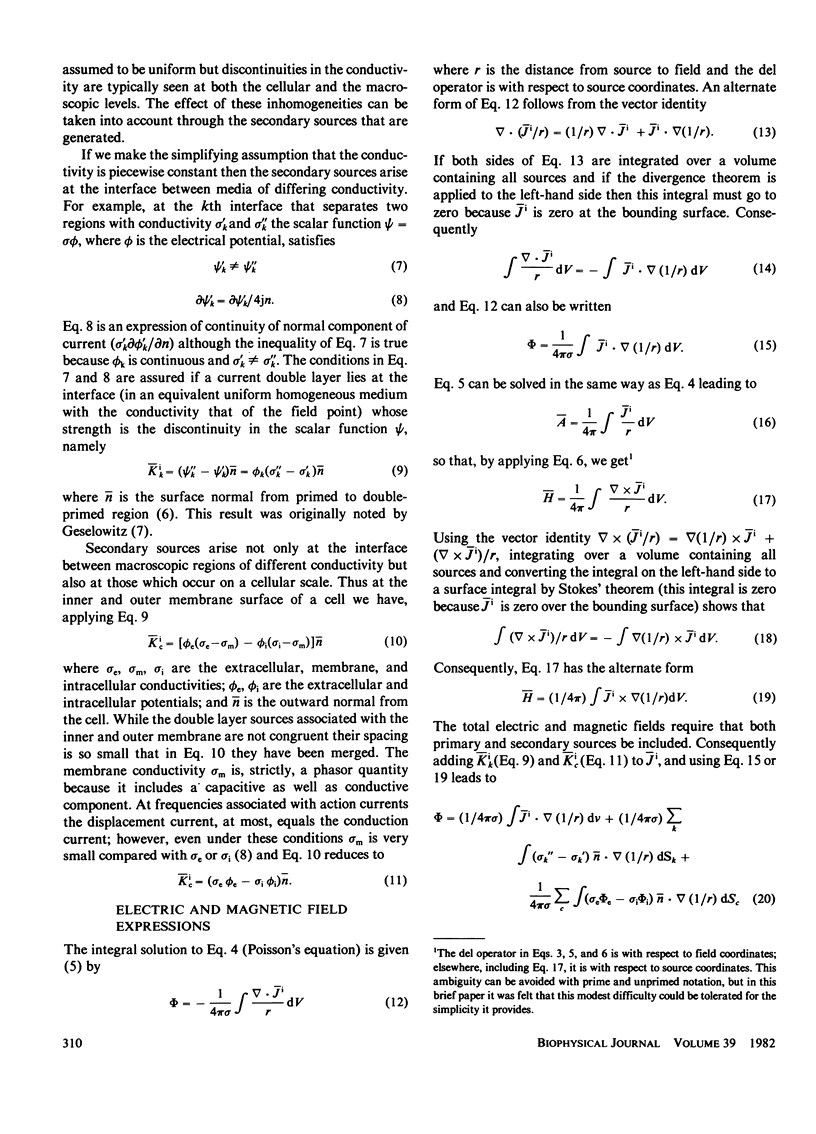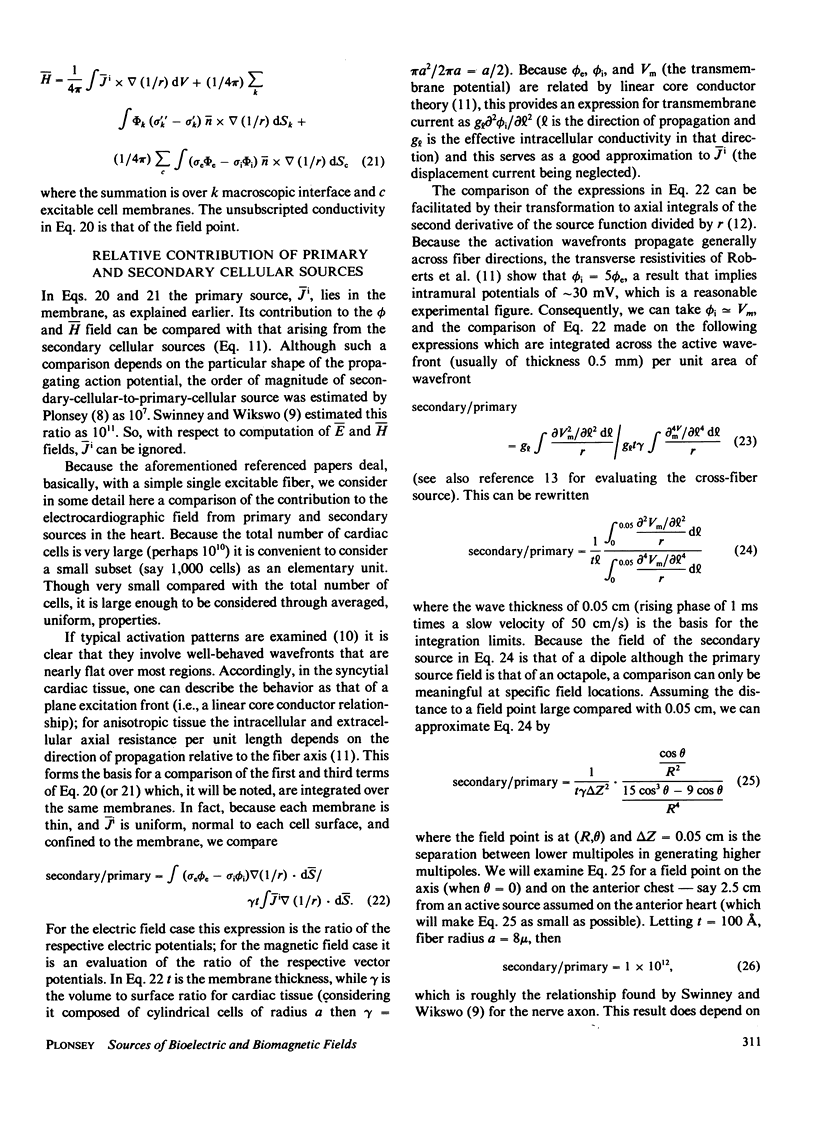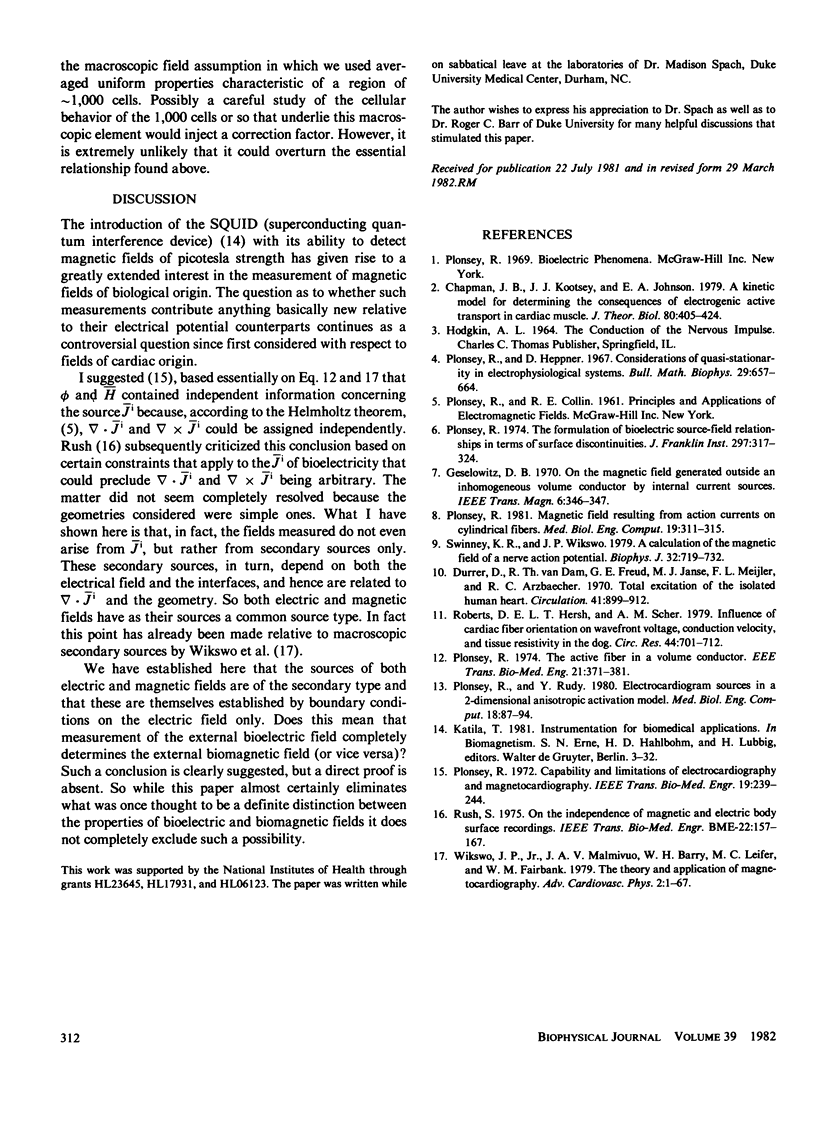Abstract
The goal of this paper is to examine the origins and relative importance of primary and secondary sources of electric and magnetic fields for excitable tissue. It is shown that for axonal and cardiac tissue a comparison of the relative field strength from both primary and secondary sources shows only the latter to be significant. Even if the divergence and curl of the primary source were independent (and hence were both needed to define the primary source), because the secondary sources all arise from the divergence of the primary source the magnetic field reflects the same source component as the electric field. As a consequence magnetic and electric fields arising from active tissue are strongly linked.
Full text
PDF



Selected References
These references are in PubMed. This may not be the complete list of references from this article.
- Chapman J. B., Kootsey J. M., Johnson E. A. A kinetic model for determining the consequences of electrogenic active transport in cardiac muscle. J Theor Biol. 1979 Oct 7;80(3):405–424. doi: 10.1016/0022-5193(79)90101-2. [DOI] [PubMed] [Google Scholar]
- Durrer D., van Dam R. T., Freud G. E., Janse M. J., Meijler F. L., Arzbaecher R. C. Total excitation of the isolated human heart. Circulation. 1970 Jun;41(6):899–912. doi: 10.1161/01.cir.41.6.899. [DOI] [PubMed] [Google Scholar]
- Plonsey R. Capability and limitations of electrocardiography and magnetocardiography. IEEE Trans Biomed Eng. 1972 May;19(3):239–244. doi: 10.1109/TBME.1972.324123. [DOI] [PubMed] [Google Scholar]
- Plonsey R., Heppner D. B. Considerations of quasi-stationarity in electrophysiological systems. Bull Math Biophys. 1967 Dec;29(4):657–664. doi: 10.1007/BF02476917. [DOI] [PubMed] [Google Scholar]
- Plonsey R. Magnetic field resulting from action currents on cylindrical fibres. Med Biol Eng Comput. 1981 May;19(3):311–315. doi: 10.1007/BF02442550. [DOI] [PubMed] [Google Scholar]
- Plonsey R., Rudy Y. Electrocardiogram sources in a 2-dimensional anisotropic activation model. Med Biol Eng Comput. 1980 Jan;18(1):87–94. doi: 10.1007/BF02442485. [DOI] [PubMed] [Google Scholar]
- Plonsey R. The active fiber in a volume conductor. IEEE Trans Biomed Eng. 1974 Sep;21(5):371–381. doi: 10.1109/TBME.1974.324406. [DOI] [PubMed] [Google Scholar]
- Roberts D. E., Hersh L. T., Scher A. M. Influence of cardiac fiber orientation on wavefront voltage, conduction velocity, and tissue resistivity in the dog. Circ Res. 1979 May;44(5):701–712. doi: 10.1161/01.res.44.5.701. [DOI] [PubMed] [Google Scholar]
- Rush S. On the independence of magnetic and electric body surface recordings. IEEE Trans Biomed Eng. 1975 May;22(3):157–167. doi: 10.1109/tbme.1975.324555. [DOI] [PubMed] [Google Scholar]
- Swinney K. R., Wikswo J. P., Jr A calculation of the magnetic field of a nerve action potential. Biophys J. 1980 Nov;32(2):719–731. doi: 10.1016/S0006-3495(80)85012-0. [DOI] [PMC free article] [PubMed] [Google Scholar]


